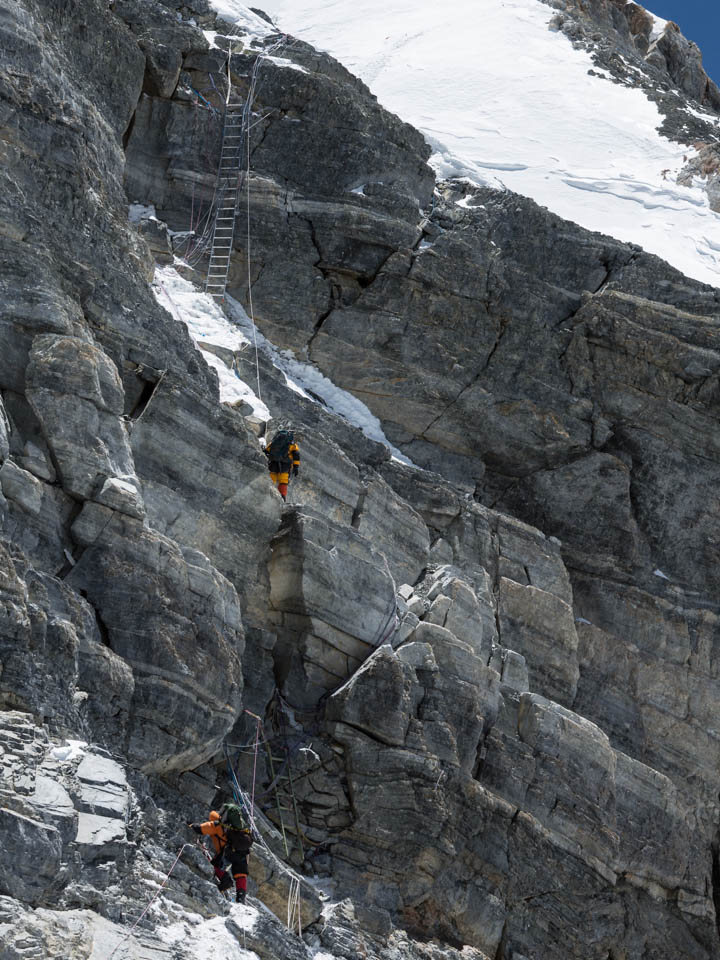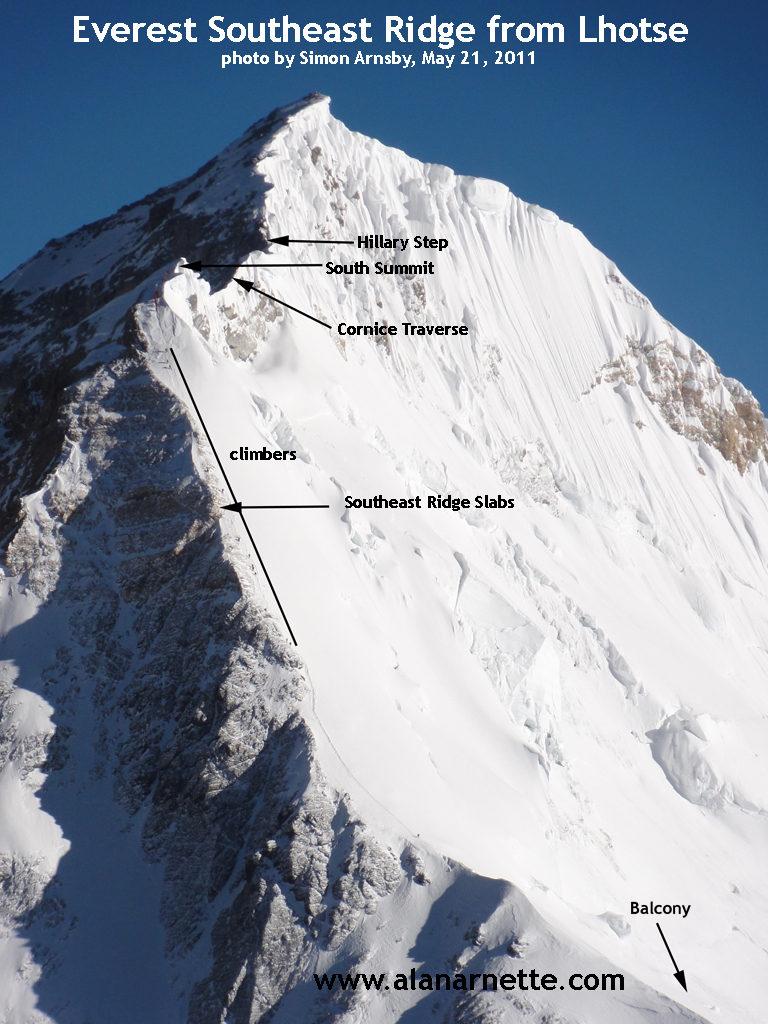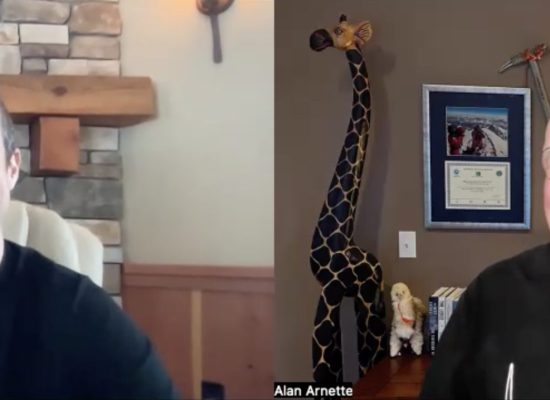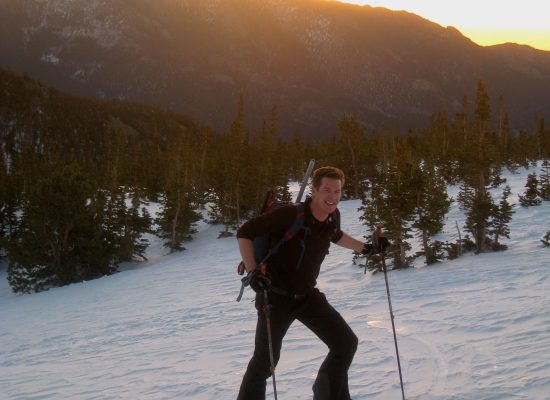Three new deaths were reported on Everest during last 24 hours up to Midnight Thursday, May 24, 2019. Summit pushes are underway now. The winds have returned plus the routes are extremely crowded on both sides due to few summit weather windows this spring.
Thus far this spring, there have been 15 deaths across six 8,000-meter peaks: Everest, Cho Oyu, Annapurna, Makalu, Kanchenjunga, and Lhotse. The deceased climbers have been: 7 Indian, 1 Sherpa, 1 Taiwanese, 1 American, 1 Bulgarian, 1 Chilean, 1 Peruvian, and 1 TBD
Summit Windows
Normally there are between 7 to 12 good weather days for summit opportunities. Last year, 2018, was unprecedented with 11 straight days of manageable winds that allowed for a record number of summits. This year, 2019, there have been only two windows thus far consisting of five summit days and the winds are forecasted to return on Friday afternoon, Nepal time.
With so few opportunities and record permits issued by Nepal, 381 to foreigners at last count, plus at least one Sherpa per member (some teams had two each) or over 800 people, it is simply impossible to squeeze that many people through the notorious bottlenecks on both sides.
Bottlenecks
On the Southeast Ridge, the climb from the South Col to the Balcony is the start of problems. Large teams start off bunched together, going too slow. With only one fixed line, everyone gets jammed up, unable or unwilling to pass.
As climbers approach the South Summit, the route goes over rocks and causes inexperienced climbers to waste precious energy, struggling to maintain balance and progress with sharp crampon spikes scuffing and slipping against slick rocks. They hold their mechanical ascenders aka jumars with a death grip pulling hard against the thin nylon rope. With over 100 people on one line, kudos to the hard working Sherpas who put the line in making sure they will hold under such extreme stress… hopefully.
Going down from the South Summit is the Cornice Traverse which is a meter wide sidewalk with 1000-meter drop on both sides causeing people to go excruciatingly slow for fear of falling. Finally there is what’s left of the Hillary Step. While no longer a rock crack to be climbed, it is a 45-degree angled snow slope that slows everyone down. This year there were waits of two to three hours in that area.

On the Tibet side, there are the Steps, especially the Second Step where again inexperienced climbers struggle to scale the lower rock bands and then have issue climbing the aluminum ladder. On the descent it can be even worse especially in high winds and exhaustion setting in.

In 2019, we are hearing horror stories of summit pushes from the South Col to the summit taking 10, 12 even 14 hours. And due to the jams, the return to the Col, is taking up to another six hours making for 20 hours pushes – that’s insane.
The best teams this year, managed their pace and times well and avoided most of these issue but if a team was unorganized, inexperienced or simply too slow, problems arose. EverestEr is talking about many cases of frostbite and rescues including a dangerous long-line rescue today from Camp 3.
Over 200 summits this morning and more expected tomorrow. Lots of celebrating but some were not so lucky. We evacuated 2 recently; one with severe altitude illness and this patient with deep frostbite who climbed on to the summit despite feeling numbness in his toes.
For comparison sake, these were my times in 2011 at age 54. Note that for my first three attempts, I turned myself back just below the Balcony after taking 6 hours to reach that spot. I knew I was going to slowly to be safe. In 2011, Kami Sherpa and I moved fast and efficiently and were the first few people on top that year so zero crowd issues. I used IMG that year.
- South Col – Balcony: 3:40
- Balcony (with 20 minute break) – South Summit: 2:30 hours
- South Summit (with 20 minute break)- top of Hillary Step: 1:00 hour
- Hillary Step – Summit: 30 minutes
- Descent Summit – Balcony: 2 hours
- Balcony – South Col: 1 hour

3 New Everest 2019 Deaths
Sadly another Indian climber has died. Guided by India’s Transcend with logistics from Nepali based Arun Treks, Anjali S Kulkarni from Mumbai, India apparently collapsed after summiting with her the husband, Sharad Kulkarni. She was close to the South Col.
Nepal based Dreamers Destination client Kalpana Das, 53, of Odisha, India summited but died on descent near Balcony. She had attempted Everest in 2004, and 2006 without a summit but did summit in 2008.
On the Tibet side of Everest, Swiss operator Kobler & Partner said that one of the members only identified by his first name, Ernst, died after summiting around 8600-meters/28,2125-feet.
Yet another Indian is reported to have died on the descent. Nihal Bagwan from Maharsthra near the South Col, again. If confirmed, this would be the 16th death and 7th Indian.
I will update these stories as new information becomes available. My deep condolences to their family and friends.
Alan
Memories are Everything
Deaths/Missing – 21 – 11 Everest
- Climbing the Seven Summits, Everest: American, Christopher Jon Kulish, 61, died near South Col after summiting
- Everest Summit Climb, Everest: British Robin Haynes Fisher, 44, died on descent after summiting
- Himalayan Ski Treks, Everest: Nepali Dhruba Bista, died a EBC after evacuation from C3
- Seven Summits Treks, Makalu: Sherpa Nima Tshering Sherpa, died after summiting at C2
- 360 Expeditions, Everest: Irish Kevin Hynes, 56, Irish died at North Col after turning back at 8300m. He had previously summited Everest South and Lhotse.
- Peak Promotion, Everest: Indian Nihal Bagwan: Indian, near the South Col
- Kobler & Partner, Everest: Ernst Landgraf, 65, died on the 2nd Step after summiting
- Dreamers Destination Treks, Everest: Indian Kalpana Das, 49, Odisha, India died after summit on descent near Balcony
- Guided by India’s Transcend with logistics from Arun Treks, Everest: Indian Anjali S Kulkarni, 54 ,from Mumbai, India died after summit on descent near C4
- Pioneer Adventures, Everest: American Don Cash, 54, dead near Hillary Step
- Seven Summit Treks, Everest: Indian Ravi Thakar, dead near C4 after summit
- Seven Summit Treks, Everest, May 16: Irish Seamus Sean Lawless, 39, missing, presumed dead after slipping near the South Col
- Seven Summit Treks, Makalu, May 17: India Dipankar Ghos, 52, missing after summit
- Seven Summits Treks, Annapurna: Wui Kin Chin, 48, cause of death unknown. exposed for 3 days at 8400m after summit
- Seven Summits Trek, Makalu:Indian Narayan Singh died of altitude illness at 8200m
- Independent, Makalu: Peruvian Richard Hidalgo, 52, died in tent at 6,300m, climbing with no Os.
- Peak Promotion, Kangchenjunga:Indian Biplab Baidya, 48, altitude sickness
- Peak Promotion, Kangchenjunga, May 16: Indian Kuntal Karar, 46, altitude sickness
- Peak Promotion, Kangchenjunga, May 16: Chilean Rodrigo Vivanco missing, presumed dead
- Makalu Xtreme, Lhotse: Bulgarian Ivan Yuriev Tomov, died after no Os’/support summit
- Summit Climb, Cho Oyu: Phujung Bhote Sherpa fell into a crevasse while fixing rope near Camp 2





35 thoughts on “Everest 2019: 3 New Deaths, Now 9 on Everest, 19 Overall”
Alan, are you able to get information on the length of time that those who died, spent at greater than 26,000 feet? I wonder if some/all of the deaths this year were due in part to greater time spent going from the South Col to the summit or spending more than one night at the South Col, waiting/hoping for crowds to diminish. If the summit attempt took greater than 12 hours just to the top, maybe these deaths during a long walk back down from the summit were caused by far too much time at +27,000 feet. Which means that the deaths were caused by too many people on the route. Which means that everyone is culpable, not just inexperience or bad luck…
To the best of my understanding, those who spent a night at the SC before summit planned for it and had sufficient oxygen. While not the norm, a few teams have been doing this for years with good success. In my estimation, only 4 of the 11 deaths were impacted by crowds, the rest sadly, the normal risks of climbing above 8000m – AMS, falls, fatigue, etc. Another consideration, we will never know was their flow rate and overall supply of oxygen. We know a few were given extra OS from their Sherpas personal use , which is wing, wrong, wrong on so many levels. imho.
Alan et al,
I just read the fascinating/sad/frustrating thread on the “Traffic Jam”. Thoughts from well intentioned people recommending reform measures. Alas, most of the recommendations involve the Nepal government willing itself to become less corrupt.
Won’t happen. I see only two possible avenues of reform:
1) more climbers decide to utilize the Tibetan route, causing a loss of Business from Nepal, and thus, a real incentive to clean up their act.
2) a medical/biological/scientific breakthrough in measuring acclimatization. This will be some measuring protocol that says you’re not ready to go above 25,000 feet. Right now, everyone THINKS they can do it because they have trained at home and they see others succeeding. Pure hubris. At least half of the 2019 deaths came from altitude/oxygen factors. I’m willing to bet that, along with all the other leadership screw ups, there was not careful monitoring of climbers’ rotations and capabilities above 25,000.
If there was an absolute metric of capability, perhaps fewer people would get summit fever. As an example consider the Tour de France. About 18 years ago, it was discovered ( by the notorious Dr. Ferrari) that to win the Tour a rider had to be able to put out 530 watts of energy for one hour. This simplified and corrected a lot of bad thinking and ridiculous training practices. Riders knew where they had to be in their training. They had a way to exactly measure progress. Team managers knew where they stood and what they had to do to improve (not talking here about taking EPO, rather about re-constituting their team lineups).
It’s troubling to see so many deaths, and unusual that around 50% of them are one nationality – Indian. Part of this is due to the economics of climbing Everest and in the Himalayas. I ran a trekking company for a few years in Kathmandu, and my chief guide lives in Pokhara and has been guiding for 15 years. He also served on expeditions to the 8000ers in the Pokhara area – Annapurna, Dhaulagiri, and Manaslu. The trekking and expedition business in Nepal was devastated by the recession of 2008-2009 and has never really recovered. Foreign firms have taken the vast bulk of business, and visitors who choose not to go that route usually either don’t go, or go on there own (trekking-wise). As for climbing, over the past few years local Nepalese guiding businesses have started to offer packages to climb Everest that are much, much cheaper than those offered by Western firms. These cater more to Indian clients, due to proximity (Delhi and IGI being a 1:45 hrs flight from KTM), cultural similarities, and shared economic interests. My friend stated that a lot of these firms also use equipment that is basically cast-offs from other companies – crampons and ice tools that might better be retired. And some of the oxygen systems also are less than optimal. Put this together with a short summit window this season, long hours above 26000 feet, and inexperience, and you have the potential for tragedy.
The Nepalese Mountaineering Agency and Tourism Agency really need to re-think licensing for the 8000 meter peaks, and include, as others have mentioned, verified proof of having summitted 6000 and 7000 meter peaks.
As a non-climber, this all seems totally barking nuts. Close the mountain entirely for however long it takes to put in decent infrastructure at the choke points. Parallelized infra, at least dual ladders etc at any given point. One season, two seasons, whatever it takes. Weather hardened ladders bolted to the rock. High impact plastic could survive longer? Get the help of the various nations’ Antarctic Surveys, they know about building durable infrastructure for these conditions.
It’s proven that a helicopter can touch down albeit briefly on the summit. Could be a way to short circuit the construction work? Use elite climbers for the work and help support it by making a docu on the project. Fund raising appeals in the meantime to support Sherpa communities who depend on the annual revenue.
Isn’t it worth the effort to end these shambolic scenes? They discredit climbing as a sport.
I think a lot of people would object to permanent infrastructure with the thinking that It’s not supposed to be a tourist park. If you put ladders in all the hard part where’s the challenge. Also with the extream winds and snow, the ladders would need to be in different spots for different years. The icefall ladders are installed each year.
Speaking of ladders, the second ladder and that gaggle of ropes on the step looks like a real danger. Wonder if the crack to the right might not be easier?
There was talk of a ladder at the Hillary Step before it changed with the 2015 earthquake. In my opinion, more aids are not the solution, more experience and qualified climbers and “guides” are.
What i find most disturbing that is eluded to in these comments is the high number of deaths related to a couple of treking companies. Surely this needs to be looked into by the authorities as to whether they bear some responsibility. Whilst i don’t know the full details surrounding the events of each death they don’t appear to be related. Are they allowing inexperienced or incapable climbers on a summit expedition? or is it their support systems that are lacking? or is it just bad luck?
Mount Everest is a natural selection moron magnet. Morons with too much money and time on their hands. GOOD RIDDANCE, give out as many permits as there are morons asking for them.
I agree…..but charge double…
By Pradeep Bashyal who is a Kathmandu-based journalist
“Nepal government could solve some of the traffic issues, save lives, and earn money if it were to make it mandatory for climbers to ascend either two 6,000 meter summits or one 7,000 meter summit in Nepal before initiating an Everest climb. This would be a boon to the mountaineering industry of the country as well as weeding out inexperienced climbers. Such preventative measures will help reduce deaths on the summit, and will also give Nepal a reputation for efficiently regulating climbing.”
What I would add is that the pre-qualifying summits in Nepal must be within 18mos and 60 days of the Everest permit. Total permit revenue to Nepal would sore upwards as would Sherpa employment and while crowds would return to Everest (within a couple years) they would be experienced.
https://thediplomat.com/2017/05/demystifying-everest/
Great idea.
Alan, thanks again for your great coverage.
That shot from the south summit towards the Hillary Step is shocking. I thought at first it was photo shopped.
And the travel times from the South Col…too long, very dangerous.
Angus (from your 2008 Everest permit group)
Fabulous updates!! Any news on Adrian Ballinger?
Thank you Alan.
Kindest
Karen Ives
I am not a climber but I am fascinated with Everest and have followed your posts for the last several years. Thank you. Question. I was amazed at the traffic jam picture being shown in the news media. Could so many people attached and pulling on the thin fixed rope cause it to dislodge an anchor and cause a calamity of deaths? This one picture and the deaths yesterday might change the way permits are issued. An accident waiting to happen with so many people in the death zone. Again thanks for your reporting…
That is a legitimate concern and frankly it’s thanks to the sherpas putting in the fixed lines that there hasn’t been a disaster of the sort.
Looking at the photo of the long line of folks heading to the summit brings a question… do people come down the same way or is there a different route to come down? In the photo it seems everyone is heading up…
Wow – even those times you listed from your climb in 2011 you would probably consider slow.
I saw that Adventure Consultants reported the following times on May 22/23 for their main summit team all of which summited.
https://www.adventureconsultants.com/latest-news/dispatches-everest-2019/
South Col Camp 4 departure 9:50PM
Balcony – 2:30AM (4:40)
Hillary Step – 5:00AM to 5:46 AM (2:30 – 3:00)
Summit – 5:55AM to 6:15AM to 7:00AM (30-60min)
So all climbers (4 client plus 3 guides and several Sherpa) made the distance in about eight to nine hours (8.0-9.0) including breaks, bottle changes and crowding.
So it is difficult to understand that only crowding leads to 12 hr ascents and the problems being reported.
The crowding certainly is a factor and maybe is the difference of and hour or two….
But it seems there is more to organization, logistics, support, planning and climber conditioning than maybe given credit.
Hi alan, did you hear about elisabeth Revol summoning Everest without ox on Thursday and now attempting Lhotse?
Yes, accurate info.
Thank you so much for your coverage. It is always so informative. I gasped seeing how many people were in the summit line. I’ve been following an Instagrammer who was going to try and summit with his team during that window. The concern I have for them has now doubled. I desperately want fewer permits to be issued.
The image of the queue waiting to summit is almost beyond comprehension,
Some of these people may not return to their wives, partners, Children, families and friends.
Is the risk of dying really worth it, I wonder.
The comments about the being in the queue to try and summit being extremely dangerous have wisdom.
The pursuit of money on every level from issuing too many permits, to both large and small climbing companies taking too many people up to summit.
There is a balancing act in all things methinks, why not Everest?
This is my humble opinion
My condolences to all who have lost someone.
For anyone wondering – Conrad Anker proved the Hilary step could be free climbed.
Actually Conrad free climbed the 2nd Step on the Tibet side. Hilary “free” climbed the Hillary Step in 1953.
Dear Alan,
It’s the Vulgarian here.
The terrifying photo you posted (Hillary Step provided by Nirmal Purja) fulfills the adage: A picture is worth a thousand words.
The picture demonstrates perfectly what you have been diplomatically, and repeatedly, saying on your blog. To wit…..too many climbers, lack of coordination, need for better permit regulation. The coup de grace is your comparison of times from the South Col to the summit and back……2019 vs 2012. Yikes!
Good work Alan. I’m sorry I pissed you off two weeks ago. You’re doing a fantastic service.
Kent
Thanks Kent (for all). Yes, this season, similar to 2012, is all the evidence needed for change…. and nothing happened then. We will see about 2020 and beyond.
You are confusing the bulgarian climber Ivan Yuriev Tomov with the young Indian Nihal Bagwan. It was N. Bagwan who was found dead in his carp. Tomov climbed with a Russian female companion the Lhotse without oxygen. They were rescued by the Spaniard Sergi Mingote and the Chilean JP Mohr, who found them during the descent between C4-C3, move them to C2. He died in Sergi’s arms. The Russian mountaineer, Nastja Runova, regained her health.
That Hillary Step bottleneck picture is insane! I thought the teams were supposed to be getting better at organising timings between them? I suppose it all goes out the window with limited summit days, summit fever and best laid plans being stymied by everything you can’t predict.
I’d been entertaining thoughts of a trek to base camp with the mind to inspire me to start climbing smaller peaks with an eventual goal of summiting Everest (wouldn’t want to go in half-cocked or underprepared as seems to be all too common these days) but to be honest a single photo like that scares me enough to give up before I start.
I know your Ueli Steck’s of the world don’t *want* to die on a mountain but would probably accept it as a very real possibility. For me the risk is probably too much.
Thank you as always Alan for sharing all of this information. I am always scouring the web for anything I can find when Ossy is on the mountain. You have kept me in the loop long before I met you in person. Thank you for all you do.
Lots of love from myself and the girls.
You are very welcome Amber. Ossy did a fantastic job this season on the big Hill(s)
Oh my, that image you posted via Nirmal Purja of the Hillary Step says a lot to whats going on. That’s an eye opener to see it captured in that image. You constantly remind us of how “busy” Everest is but that really illustrates it.
The word “herd” came to mind.
Crazy
Good evening, Alan,
Dream Wanderlust on Facebook states that an Indian gentleman by the name of Nihal Bagwan is reported to have passed away on Everest at Camp 4 on the descent.
Sadly thank you. They are being reported faster than I can write about them.
You are confusing the bulgarian climber Ivan Yuriev Tomov with the young Indian Nihal Bagwan. It was N. Bagwan who was found dead in his carp. Tomov climbed with a Russian female companion the Lhotse without oxygen. They were rescued by the Spaniard Sergi Mingote and the Chilean JP Mohr, who found them during the descent between C4-C3, move them to C2. He died in Sergi’s arms. The Russian mountaineer, Nastja Runova, regained her health.
Comments are closed.